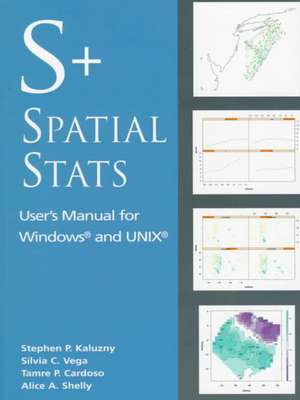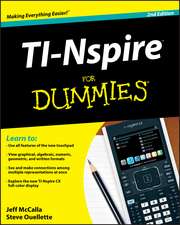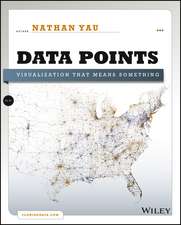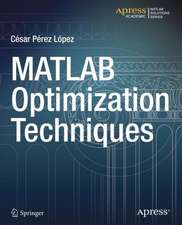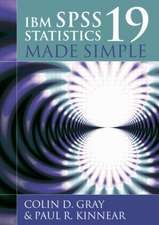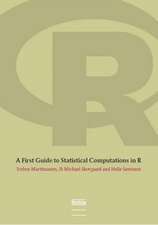S+SpatialStats: User’s Manual for Windows® and UNIX®
Autor Stephen P. Kaluzny, Silvia C. Vega, Tamre P. Cardoso, Alice A. Shellyen Limba Engleză Paperback – 24 mar 1998
Preț: 645.47 lei
Preț vechi: 759.37 lei
-15% Nou
Puncte Express: 968
Preț estimativ în valută:
123.51€ • 129.55$ • 102.82£
123.51€ • 129.55$ • 102.82£
Carte tipărită la comandă
Livrare economică 01-15 aprilie
Preluare comenzi: 021 569.72.76
Specificații
ISBN-13: 9780387982267
ISBN-10: 0387982264
Pagini: 328
Ilustrații: XVI, 328 p.
Dimensiuni: 178 x 235 x 17 mm
Greutate: 0.56 kg
Ediția:1998
Editura: Springer
Colecția Springer
Locul publicării:New York, NY, United States
ISBN-10: 0387982264
Pagini: 328
Ilustrații: XVI, 328 p.
Dimensiuni: 178 x 235 x 17 mm
Greutate: 0.56 kg
Ediția:1998
Editura: Springer
Colecția Springer
Locul publicării:New York, NY, United States
Public țintă
ResearchCuprins
1 Introduction to Spatial Data and S+SpatialStats.- 1.1 Types of Spatial Data.- 1.2 Analysis of Spatial Data.- 1.3 Stochastic Model for Spatial Data.- 1.4 Spatial Analysis Tools in S+SpatialStats.- 1.5 Limitations.- 2 Getting Started with S+SpatialStats.- 2.1 Starting and Quitting S+SpatialStats.- 2.2 Getting Help for S+SpatialStats Functions in Windows.- 2.3 Graphics Devices.- 2.4 Using Trellis Graphics in S+SpatialStats.- 2.5 Importing and Exporting Spatial Data.- 2.6 Sample Data Sets Available in S+SpatialStats.- 3 Visualizing Spatial Data.- 3.1 EDA Tools.- 3.2 Applications of EDA to Geostatistical Data.- 3.3 Applications of EDA to Lattice Data.- 3.4 Applications of EDA to Point Patterns.- 3.5 Hexagonal Binning.- 4 Analyzing Geostatistical Data.- 4.1 Variogram Estimation.- 4.2 Modeling the Empirical Variogram.- 4.3 Kriging.- 4.4 Simulating Geostatistical Data.- 5 Analyzing Lattice Data.- 5.1 Spatial Neighbors.- 5.2 Spatial Autocorrelation.- 5.3 Spatial Regression Models.- 5.4 Simulating Lattice Data.- 6 Analyzing Spatial Point Patterns.- 6.1 Objects of Class “spp”.- 6.2 Measures of Spatial Randomness.- 6.3 Examining First- and Second-Order Properties.- 6.4 Simulating Point Patterns.- 7 S+SpatialStats and GIS.- 7.1 ARC/INFO Coverages and Spatial Data Analysis.- 7.2 Example: Analysis of a Point Coverage.- 7.3 Example: Analysis of a Polygon Coverage.- 7.4 Example: Analysis of a Grid.- Appendices.- A.1.1 Requirements.- A.1.2 Installation Procedure.- A.1.3 Verifying Installation.- C Sample Data Sets.- D Function Reference.
Recenzii
From a review:
SHORT BOOK REVIEWS
"The book is well laid out, similar in style to a number of LaTex manuals, which I find aesthetically pleasing and easy to navigate. A concise introduction gives a good overview of the three types of spatial data and some associated spatial statistical concepts. ... I highly recommend this book."
Caracteristici
The only manual available for this S-PLUS software module * S-PLUS books continue to be fast-sellers as use of the software is rapidly growing * First comprehensive, object-oriented package for the analysis of spatial data * Used to analyze data in environmental, mining, and petroleum engineering; natural resources; geography; epidemiology; demography For both Windows and UNIX platforms
